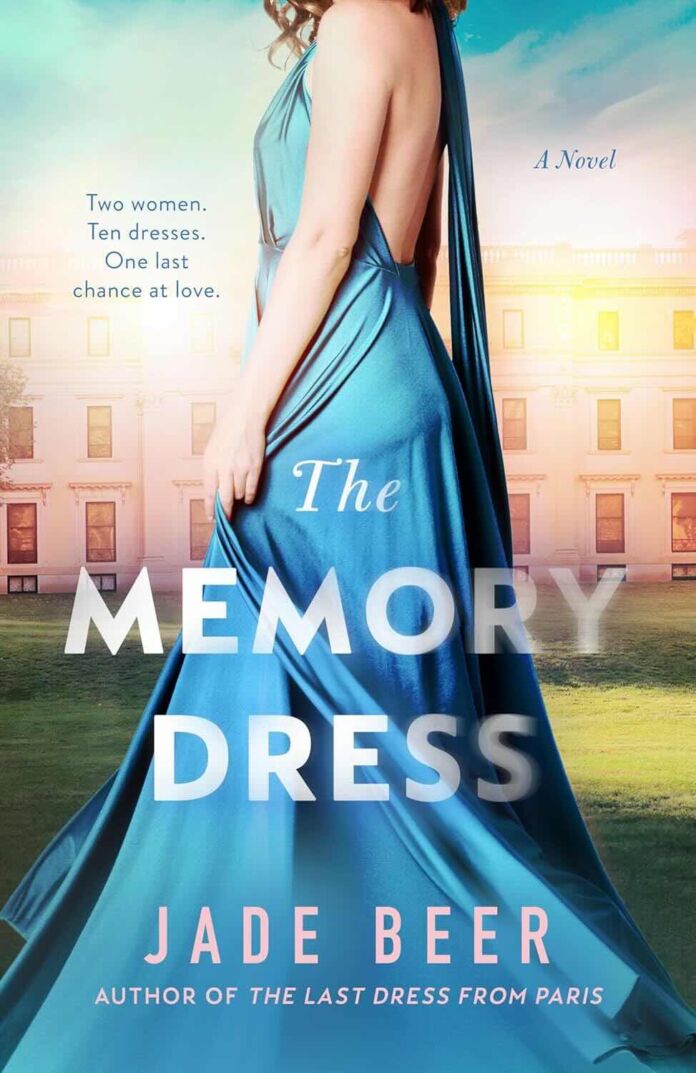In her latest novel, The Memory Dress, Jade Beer weaves an intricate tapestry of relationships, memories, and haute couture against the backdrop of Princess Diana’s iconic fashion legacy. This dual-timeline narrative skillfully intertwines the stories of two women: Jayne, a present-day dog walker seeking connection, and Meredith, a talented seamstress whose life becomes entwined with royal fashion history in the late 1980s.
Plot and Narrative Structure
The story unfolds in parallel timelines, each compelling in its own right. In 2018, we follow Jayne, a deliberately solitary woman who finds herself drawn into the mysterious world of her elderly neighbor, Meredith. The latter’s increasingly confused state and missing husband create the central mystery that drives the contemporary narrative. Meanwhile, in 1988, we witness young Meredith’s journey working at Catherine Walker’s atelier, crafting Princess Diana’s memorable gowns while falling deeply in love with her colleague William.
Beer’s narrative structure is masterful, though occasionally the transitions between timelines could be smoother. The way she gradually reveals the connection between past and present events keeps readers engaged, even if some plot developments feel slightly predictable to seasoned readers of the genre.
Character Development
Strengths:
- Meredith’s character arc is particularly well-crafted, showing her evolution from a confident young seamstress to an elderly woman grappling with dementia
- Jayne’s transformation from isolated observer to active participant in life is beautifully rendered
- The supporting cast, especially Davina and her daughters, adds depth and warmth to the narrative
Areas for Improvement:
- William’s character, while pivotal to the story, sometimes feels more plot device than fully realized person
- Some secondary characters could benefit from deeper development
- Fiona’s late introduction to the story, while dramatic, might have been more impactful with earlier foreshadowing
Themes and Symbolism
Beer expertly explores several profound themes:
- Memory and Identity
- Love and Loss
- Community and Connection
- The Power of Creativity
- Family Bonds and Forgiveness
The titular memory dress serves as a powerful symbol throughout the novel, representing both the tangible legacy of Diana’s fashion influence and the intangible connections that bind people across time.
Writing Style and Technical Elements
Beer’s prose is elegant and accessible, though occasionally veering toward the sentimental. Her description of couture techniques and fashion history demonstrates impressive research and adds authenticity to the narrative. The author’s background as former editor-in-chief of Condé Nast’s Brides magazine shines through in her detailed descriptions of fabrics, construction techniques, and the world of high fashion.
Historical Context and Accuracy
One of the novel’s greatest strengths lies in its meticulous attention to historical detail, particularly regarding:
- Princess Diana’s fashion choices
- The workings of a haute couture atelier
- Late 1980s London fashion scene
- The 1997 Christie’s auction of Diana’s dresses
Social Commentary and Contemporary Relevance
The novel tackles several timely issues:
- The challenges of caring for aging parents
- Living with dementia
- The importance of community support
- The balance between career and personal life
- The impact of loss on family dynamics
Critical Analysis
Notable Achievements
Beer successfully creates a moving exploration of memory, love, and connection. The parallel storylines complement each other well, and the mystery elements keep readers engaged. The author’s handling of dementia is particularly sensitive and well-researched.
Areas for Development
The pacing occasionally slows in the middle sections, and some plot resolutions feel slightly too neat. The connection between Jayne’s personal trauma and Meredith’s situation, while thematically relevant, could be more subtly developed.
Comparison with Other Works
Fans of Lucinda Riley’s The Seven Sisters series or Kate Morton’s dual-timeline novels will find familiar elements here, though Beer brings her own unique perspective to the genre. Her previous work, The Last Dress from Paris, shares similar themes of fashion history and personal discovery.
Target Audience
This novel will particularly appeal to readers who enjoy:
- Historical fiction with dual timelines
- Fashion history
- Stories about Princess Diana
- Family dramas
- Mystery elements in literary fiction
Final Verdict
The Memory Dress a good read for its ambitious scope, emotional depth, and skilled handling of complex themes. While not without its flaws, the novel succeeds in creating a moving portrait of love, loss, and the power of human connection.
Reading Experience and Emotional Impact
The novel’s greatest strength lies in its ability to move readers emotionally while maintaining intellectual engagement. Beer has created a story that resonates on multiple levels, from the personal to the historical, making it both entertaining and thought-provoking.
Recommendations for Similar Reads
For readers who enjoyed The Memory Dress, consider:
- The Dressmaker’s Gift by Fiona Valpy
- The Paris Seamstress by Natasha Lester
- The Last Dress from Paris by Jade Beer
- The Gown by Jennifer Robson
Impact and Significance
Beer’s novel makes a valuable contribution to historical fiction, particularly in its exploration of Princess Diana’s fashion legacy and its sensitive portrayal of dementia. The book succeeds in balancing entertainment with meaningful social commentary.
Conclusion
The Memory Dress is a touching and well-crafted novel that will resonate with readers who appreciate detailed historical fiction with emotional depth. Despite minor flaws, it stands as a testament to the power of human connection and the enduring influence of both personal and public history on our lives. Beer has created a work that honors both the glamour of haute couture and the quiet dignity of everyday love and loss.
Author Background and Expertise
Jade Beer brings her extensive experience in fashion journalism to bear in this novel, creating authentic details that enhance the narrative. Her understanding of both the fashion world and human relationships adds depth to the story.
This review reflects my honest assessment of The Memory Dress, acknowledging both its considerable achievements and areas where improvement might have been possible. The novel represents a significant addition to contemporary historical fiction, particularly for readers interested in the intersection of fashion history and personal drama.





